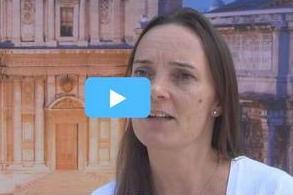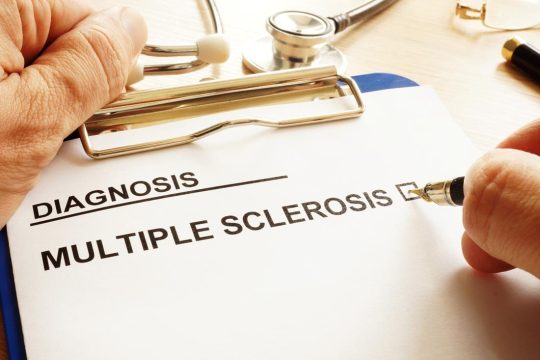Advertisment
IMV 2015 Debate: Professors Faith Davies, Gareth Morgan (both UAMS) and Sagar Lonial (Atlanta) discuss the importance of combination therapy. Professor Faith Davies from UAMS and Professor Shaji Kumar from Mayo Clinic faced one another in a debate over the respective benefits of combination therapy and sequential therapy in MM…

Specialists in the MM field are in the enviable position of having lots of different treatment options available – the challenge is how to integrate these into the treatment paradigm to achieve the best possible outcome for patients. Professor Faith Davies from UAMS and Professor Shaji Kumar from Mayo Clinic faced one another in a debate over the respective benefits of combination therapy and sequential therapy in MM, Professor Davies arguing that combination therapy is supported by sound biological and clinical rationales whereas Professor Kumar pointing out that sequential therapy is likely to be cheaper, less toxic, and have less impact on the patient’s quality of life.
To maximise the therapeutic benefit for MM patients, the clinician should aim for cure if possible, together with prolonged survival and minimal long- and short-term side effects. Professor Davies began by highlighting the negative effects that accrue with increasing intraclonal heterogeneity as the disease progresses.1 Initiating combination therapy at the time of presentation can potentially stop the development of inherent resistance to drugs that the patient may not even have been exposed to at the time of relapse.2 An additional biological rationale is to combine agents to maximise and exploit their modes of action to enhance myeloma cell growth inhibition and cell death, for example by activating synergistic apoptotic pathways,3 inhibiting parallel signalling pathways or inhibiting the compensatory cross-talk between signalling pathways which leads to upregulation of resistance mechanisms.4, 5
Importantly, the biological reasoning behind combination therapy has been shown to translate into the clinical arena: a recently published phase 3 study showed that patients with relapsed or refractory MM who received a combination of elotuzumab, lenalidomide, and dexamethasone had a significant relative reduction of 30% in the risk of disease progression or death.6 A large study in 792 patients with relapsed MM who received combination therapy with carfilzomib, lenalidomide and dexamethasone showed that combination therapy was well tolerated7and Professor Davies concluded that combination therapy should be the strategy of choice for achieving maximal clinical benefit.
Arguing against this motion, Professor Kumar reminded the audience that MM is not a single disease and the rationale of adding drugs together to provide synergy or enhancing efficacy to achieve deeper responses may not always be feasible. Although the survival outcome has been shown to correlate with the depth of response8 – for which PFS is a surrogate marker – patients with GEP 70 low-risk MM are not actually in need of a deeper response for improved outcomes.9 Professor Kumar also pointed out that improved PFS may not necessarily translate into improved overall survival; in addition, the risk of greater toxicity and the consequent impact on quality of life,10 together with the significant cost burden imposed on patients and/or healthcare providers by combination therapy11, 12 help to strengthen the case for sequential therapy. Given the heterogeneity of MM some patients may benefit from combination therapy, but unless there is a documented survival or MRD advantage of combination therapy over sequential therapy, sequential therapy should be the favoured option.
References
- Morgan GJ, Walker BA, Davies FE. The genetic architecture of multiple myeloma. Nat Rev Cancer 2012;12:335-48.
- Richardson PG, Sonneveld P, Schuster MW, et al. Bortezomib or high-dose dexamethasone for relapsed multiple myeloma. N Engl J Med 2005;352:2487-98.
- Hideshima T, Anderson KC. Molecular mechanisms of novel therapeutic approaches for multiple myeloma. Nat Rev Cancer 2002;2:927-37.
- Aronson LI, Davies FE. DangER: protein ovERload. Targeting protein degradation to treat myeloma. Haematologica 2012;97:1119-30.
- Workman P, Davies FE. A stressful life (or death): combinatorial proteotoxic approaches to cancer-selective therapeutic vulnerability. Oncotarget 2011;2:277-80.
- Lonial S, Dimopoulos M, Palumbo A, et al. Elotuzumab Therapy for Relapsed or Refractory Multiple Myeloma. N Engl J Med 2015;373:621-31.
- Stewart AK, Rajkumar SV, Dimopoulos MA, et al. Carfilzomib, lenalidomide, and dexamethasone for relapsed multiple myeloma. N Engl J Med 2015;372:142-52.
- Martinez-Lopez J, Lahuerta JJ, Pepin F, et al. Prognostic value of deep sequencing method for minimal residual disease detection in multiple myeloma. Blood 2014;123:3073-9.
- Kapoor P, Kumar S, Mandrekar SJ, et al. Efficacy of thalidomide- or lenalidomide-based therapy in proliferative multiple myeloma. Leukemia 2011;25:1195-7.
- 1Niesvizky R, Flinn IW, Rifkin R, et al. Community-Based Phase IIIB Trial of Three UPFRONT Bortezomib-Based Myeloma Regimens. J Clin Oncol 2015.
- San-Miguel JF, Hungria VT, Yoon SS, et al. Panobinostat plus bortezomib and dexamethasone versus placebo plus bortezomib and dexamethasone in patients with relapsed or relapsed and refractory multiple myeloma: a multicentre, randomised, double-blind phase 3 trial. Lancet Oncol 2014;15:1195-206.
- Huntington SF, Weiss BM, Vogl DT, et al. Financial toxicity in insured patients with multiple myeloma: a cross-sectional pilot study. The Lancet Haematology;2:e408-e416.





